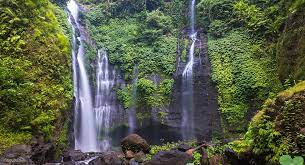Protecting Our Feathered Friends: The Importance of Bird Conservation
Birds are not only captivating creatures that bring joy with their melodies and vibrant plumage but also play crucial roles in our ecosystems. Unfortunately, many bird species around the world are facing threats such as habitat loss, climate change, pollution, and illegal trade. In this article, we will explore the significance of bird conservation efforts and why safeguarding these winged wonders is vital for the health of our planet.
The Role of Birds in Ecosystems:
Birds are integral components of ecosystems, contributing to various ecological processes. They serve as pollinators, seed dispersers, and predators of insects and small mammals. By maintaining these roles, birds help regulate populations of other species, control pests, and promote healthy plant communities. Their actions have a ripple effect on the overall balance and functioning of ecosystems, making them essential for biodiversity conservation.
Economic and Ecotourism Benefits:
Birds also offer significant economic benefits through ecotourism. Birdwatchers and nature enthusiasts travel to various regions to observe and photograph birds, contributing to local economies. Birding destinations, such as national parks and wildlife reserves, attract visitors from around the world, who spend money on accommodations, transportation, and local businesses. Protecting bird populations and their habitats not only ensures the survival of these species but also supports sustainable economic growth.
Indicator Species for Environmental Health:
Birds serve as indicators of environmental health and ecosystem quality. Due to their sensitivity to environmental changes, such as pollution, habitat loss, and climate shifts, changes in bird populations can signal broader environmental issues. Declining bird populations can be a warning sign of habitat degradation, pollution, or imbalances in the ecosystem. By monitoring and conserving bird populations, we can gain valuable insights into the overall health of our environment.
Conservation Strategies and Initiatives:
Numerous organizations, conservationists, and researchers are working tirelessly to protect bird species and their habitats. Conservation strategies include the creation and preservation of protected areas, restoration of degraded habitats, raising awareness about the importance of birds, and supporting research on bird populations and behavior. Efforts are also focused on reducing threats such as illegal hunting, habitat destruction, and climate change impacts. Collaborative initiatives involving governments, NGOs, communities, and individuals are crucial for successful bird conservation.
Citizen Science and Community Involvement:
Citizen science projects play a vital role in bird conservation by involving the public in data collection, monitoring, and research efforts. Bird enthusiasts, birdwatchers, and local communities can contribute valuable observations, helping to track bird populations, migration patterns, and breeding behaviors. Community involvement and education programs raise awareness about birds, their importance, and ways to protect their habitats. Such initiatives foster a sense of stewardship and empower individuals to take action for bird conservation.
Bird conservation is not just about preserving beautiful creatures; it is a fundamental part of ensuring the health and balance of our ecosystems. Birds play essential roles in pollination, seed dispersal, and pest control, contributing to biodiversity and ecosystem stability. By protecting bird species and their habitats, we can safeguard the broader environmental health, promote sustainable economic growth, and inspire future generations to appreciate and value the natural world. Together, through collaborative efforts and individual actions, we can make a difference and secure a brighter future for our feathered friends and our plane




